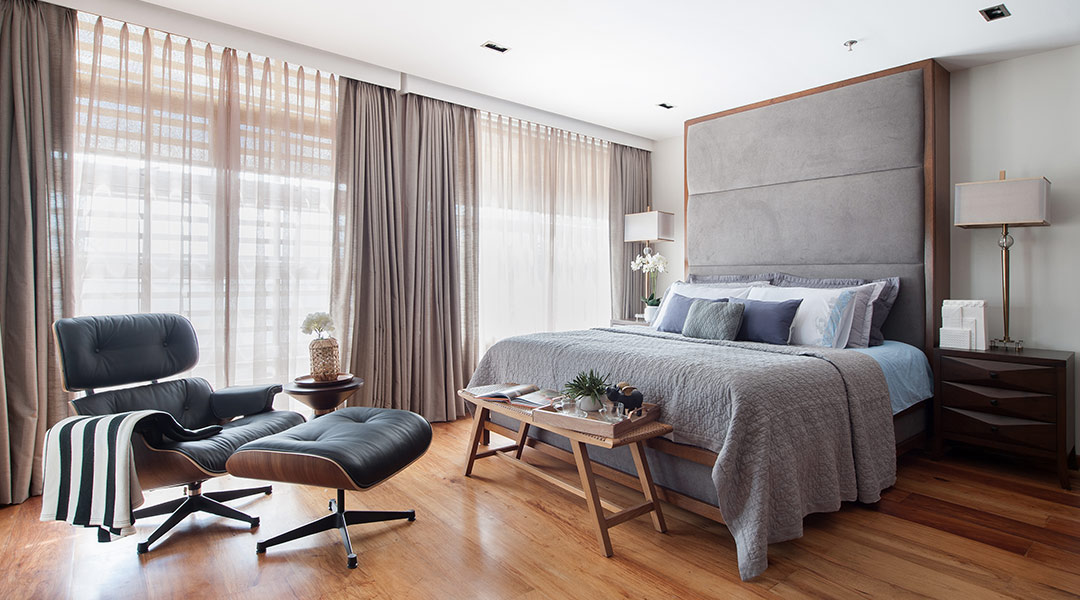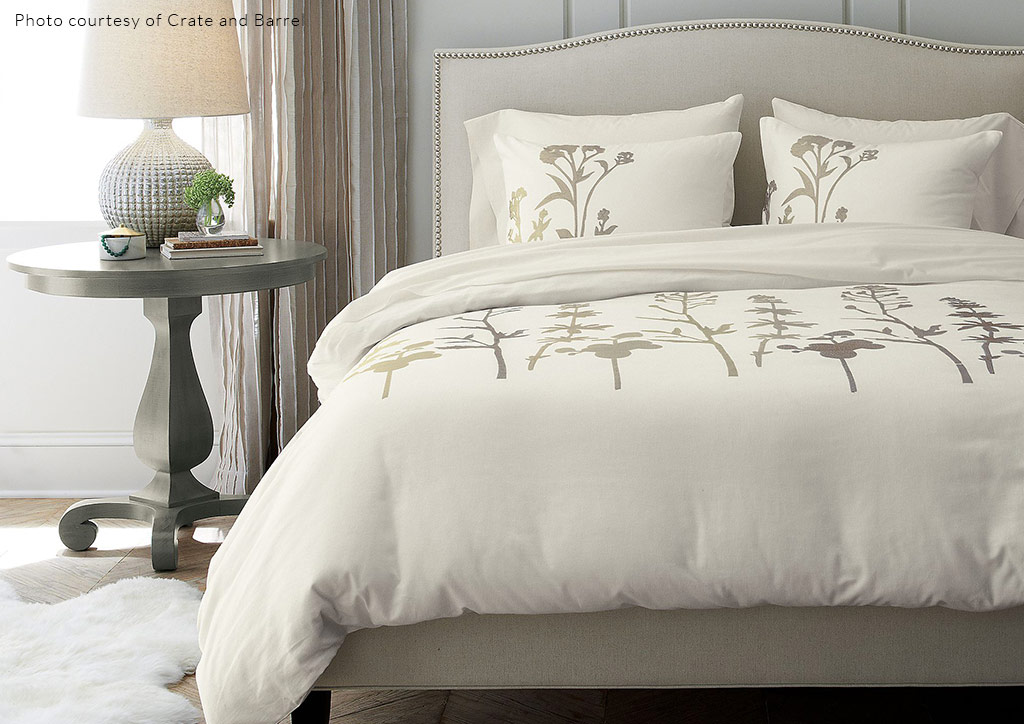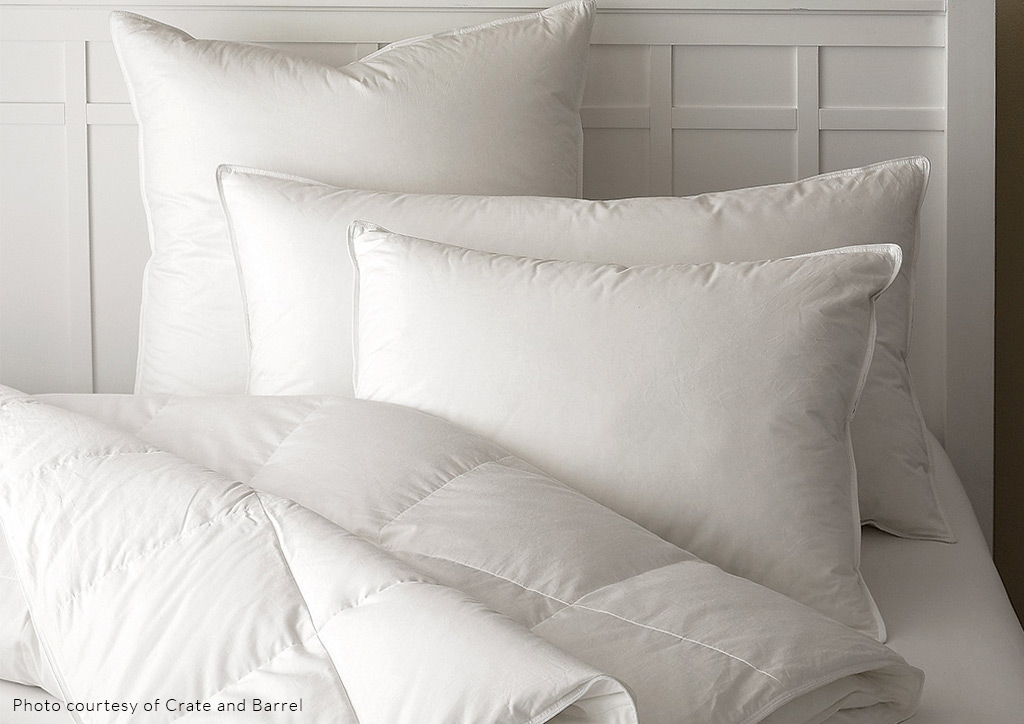
We spend almost a third of our lives sleeping, so it makes sense to ensure we get the best sleep we can. The bedroom is the most private of spaces, and for this reason, we often neglect it and have a tendency to put it last when it comes to designing our homes. Here’s a primer to help you create the bedroom you deserve.

BEDS
There are five basic bed sizes available. Your choice depends on the user and size of the bedroom. A good rule of thumb when considering mattress size is that you should be able to open and close the closet cabinet doors, pull chairs from dressers, and move around the bed easily. While there are special mattress sizes available (such as those for taller people, children, or toddlers), keep in mind that local suppliers often sell sheets in the following sizes, as well:
Single or twin 39in. x 75in. This size is best for children or one adult in a compact bedroom.
Double or full 54in. x 75-80in. If space permits, a double or full size mattress is ideal for one person to sleep comfortably in.
Queen 60in. x 75-80in. A queen-sized bed can accommodate two adults in a small bedroom or guest room.
King 76in. x 80in. This size is ideal for two people to share a bed, with enough space to move around.
California King 72in. x 84in. If you have a large bedroom, this size provides more than enough room for you and your partner with room to spare.

KINDS OF MATTRESSES
There are many kinds of mattresses from different brands. The most common area spring mattresses, which have steel springs or coils that distribute the weight of the user. The more coils there are, the better the support provided. A downside to these mattresses is that certain areas have a tendency to compress over time. Polyurethane, latex, or memory foam are used in foam mattresses. Different types offer different supports and densities, and come in a variety of price points. There are also hybrid mattresses that feature a combination of both springs and foam, adjustable mattresses that are ideal for those with health problems, and also mattress toppers that can be placed above your existing mattress for added support and comfort at a fraction of the price.
BED LINEN
Before buying sheets, measure the length, width, and depth of your mattress to get the best fit. Check the thread count of what you plan to buy. This refers to the number of threads per square inch in both horizontal and vertical directions. Generally, the higher the thread count, the better the fabric will feel against your skin. Go for sheets with a thread count of at least 200. The most commonly used fabric for bed sheets is cotton, but you may also opt for silk, satin, microfiber, or a combination of those. Have at least three sets of beddings—one you will use when one set is in the wash, and another ready for use in your linen closet. Don’t forget to buy extra pillowcases, too.
Standard 20in. x 26in. This size will fit most standard pillowcases available in the market. Use one for a single or twin bed, a pair for double/full or queen, and three across for a king or California king mattress.
Queen 20in. x 30in. Two queen-sized pillows will fit perfectly across a queen-sized mattress. While these may also be used with standard pillowcases, the fit might be a bit tight, resulting in a firmer pillow.
King 20in. 36in. This size is much longer than your standard pillow and a pair will span a king-sized mattress easily.
Sham 26in. x 26in. Traditionally a pillowcase that transforms a normal-sized pillow into a decorative pillow, shams today are used to decorate beds or to provide back support while sitting. These can be placed behind bed pillows when sleeping, or removed when not in use. Shams also come in 26in. x 20in and 36in. x 20in. sizes.

Apart from size, pillows are also classified by the material used inside. Natural fill pillows are stuffed with feathers, down, or a combination of both. Usually found in hotels, they are extremely soft, and they conform well to your head, neck, and shoulders. Meanwhile, Synthetic fill pillows are usually made from polyester. These pillows are easier to wash, and are hypoallergenic.
Comforter, duvet, and/or blanket
Pillows and pillowcases
Shams and pillowcases
Shams and bolster pillows
Bed covers and bed skirts (optional)
- When it comes to bed linen, go with your personal choice. To get the most mileage from your sheets, go for plain-colored ones that you can mix and match with ease.
- Put your fitted sheet on the mattress and make sure that it fits properly. Smoothen it over the bed.
- Next, place your flat sheet over your fitted sheet. Cover the whole bed and tuck the bottom part under the foot of the bed using hospital corners (fold the corner of the sheet, then tuck neatly under the mattress). You may choose to tuck the sides under the mattress or leave them as is to make it easier to get into bed.
- Cover the bed with your comforter, duvet, or blanket. Lay it over the bed, fold back together with the exposed flat sheet about a third of the way, and tuck in the sides under the mattress.
- Position your bed pillows accordingly. You can opt for a single or double layer of pillows depending on your preference. Shams, throw pillows, and bolsters are great for adding an elegant decorative touch to make your bed look more inviting. You may store these elsewhere when not in use.
Remember to launder your sheets once a week or as needed, and rotate them regularly to prevent wear and tear. Fluff your pillows to maintain their shape and follow manufacturer instructions for cleaning. Now that your bed is perfectly made, all you have to do is enjoy it. Happy sleeping!


